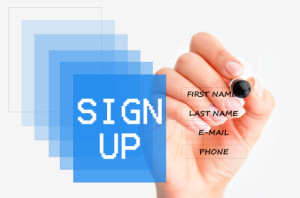by gabriel_sales | May 12, 2014

This is part two of a blog series on marketing automation in 2014. Click here for part 1.
As an outsourced marketing automation provider, we understand how difficult it can be to start. There are now dozens of solutions out there, and everyone has different opinions about what you should do.
Here are three quick tips for companies who have yet to implement a marketing automation solution.
1. Understand that the ‘best’ marketing automation platform for your company is dependent on many factors.
As a company that offers outsourced marketing automation services, we make our platform recommendations by weighing the client’s demographics and goals against the capabilities and limitations of the software. When choosing the right solution for your business, you need to consider things like the size of prospect database, number of emails that need to be sent daily, possible integrations, the number of users and more.
2. Leverage implementation checklists and guides, training webinars and other guides to learn the ins and outs of your software.
While marketing automation software is somewhat complex, there is a ton of content out there that can help you simplify it. Most marketing automation platforms have support centers and training videos to help with the basics. Some platforms, like eTrigue, hold weekly live training webinars that cover different features and processes in more depth.
3. Bring in marketing automation experts to streamline your implementation process and train you on how most effectively use your platform.
While we aren’t arguing that you can’t implement marketing automation on your own, we will argue that the whole process goes much smoother if you have experts there to guide you. From the technical setup process to list segmentation to setting up and run automated email campaigns, outsourced marketing automation services can help enable you to use your platform as effectively as possible.
For more on marketing automation, read this quick blog on How Marketing Automation Impacts B2B Lead Generation. You can find more info on our outsourced marketing automation services
by gabriel_sales | May 8, 2014
 As digital marketing takes up more and more of the overall marketing space, more and more companies are invetsing in marketing automation solutions to help streamline their marketing process.
As digital marketing takes up more and more of the overall marketing space, more and more companies are invetsing in marketing automation solutions to help streamline their marketing process.
In the past few years, marketing automation has been a revolutionary force in the world of digital selling. B2B companies who leverage marketing automation as a part of an integrated sales and marketing program gain better targeting of prospects, improved lead management, the ability to measure results and ROI and better customer relationship management.
In a recently published report from Regalix Research on the State of Marketing Automation in 2014, it was found that 88% of B2B marketers are either currently using or implementing marketing automation tools in the coming year. Of those who did not currently have a solution in place, 69% plan to implement a solution in 2014.
The report also looked at the biggest obstacles to effective use of marketing automation. While the report lists over a dozen, two of the top obstacles are lack of expertise to use the data and intelligence offered by the tool (55%) and complexity of marketing automation software (34%). This helps to explain why the top factor companies look at when evaluating a marketing automation software (86%) is ‘ease of use’.
In addition to the complexity, it can often take a while to see results once your marketing automation system is in place. The report found that only 20% of marketing automation users saw results within the first three months, while it took at least six months for 64% of users.
Continue reading for implementation tips.
by gabriel_sales | Mar 20, 2014
 This is the second half of a blog series on B2B content ideas to move your deal forward. For Part 1, click here.
This is the second half of a blog series on B2B content ideas to move your deal forward. For Part 1, click here.
2. Case studies/Testimonials
More and more, we are finding that engagement with content like case studies, reviews and testimonials is a prerequisite to purchase. In the B2C world, it is now almost second nature to check reviews before making a purchase (Yelp!, Rotten Tomatoes, Angie’s List, etc.). Search Engine Journal recently found that “nearly 63% of consumers indicate they are more likely to purchase from a site if it has product ratings and reviews.”
The behavioral impulse to check for social proof prior to purchase exists in the B2B world as well, and your buyers will appreciate you for providing them this type of content. Sometimes, hearing confirmation of your success from your customers is the final motivation needed for purchase, and your happy customers are generally more than willing to provide you with this type of content. While written testimonials and case studies work well, you may want to try a video or webcast format for increased engagement.
3. Demo videos
While not appropriate for every B2B solution, brief demo videos can be an extremely valuable sales asset. For more complex sales like enterprise software solutions, providing short videos that give overviews of the most important features or capabilities helps prospects both understand your solution better and visualize using the product themselves.
By keeping the demo videos short and relatively high level, you can create an incentive to ‘schedule a live/custom demo’ that goes more into depth. One thing to remember with demo videos is to keep the content focused on how you solve problems rather than a straight feature/benefit description. Especially for more complex technology sales, the technical jargon of feature/benefit selling can go over the head of some prospects without some grounding in day-to-day value.
While the right combination of content will vary from company to company, we have found these types of content to be effective in a variety of B2B contexts. For more on creating marketing content that achieves sales results, read our series titled, “7 Types of B2B Content for Ongoing Content Production.”
Feel free to contact us with any questions.

by gabriel_sales | Mar 18, 2014
 In B2B sales, we all know by now that we need to incorporate digital content into our sales processes. As a recent blog put it, “content is the fuel to our sales and marketing engine.”
In B2B sales, we all know by now that we need to incorporate digital content into our sales processes. As a recent blog put it, “content is the fuel to our sales and marketing engine.”
While content has many functions along the sales process, from lead gen to nurturing to SEO, etc., its greatest value is in helping move deals through the sales pipe to close.
In order for your content to help take buyers through the first stages of their buying journey, you need content that gets your name to the top of Google SERPs, educational content to help buyers understand your space and solution, and content that gently reminds not-yet-ready-to-buy leads of your value prop.
But to complete the journey, you need content that gives ready-to-buy prospects reasons to keep moving the deal forward.
From our experience running hundreds of outsourced sales and marketing campaigns for our clients, the three types of content we have found to be most effective in getting leads to ‘take the next step’ are:
- Checklists/Requirement Sheets
Many times in the early stages B2B content sales, prospects no close to nothing about your space or solution. Management consulting services and enterprise software solutions aren’t like iPods or toilet paper, where the general requirements are well known and risks of making the wrong decision are low. Because B2B sales are more abstract/technical and higher risk than other sales, B2B content buyers sometimes need help shopping.
Checklists and/or requirement sheets can therefore be very valuable to buyers who have never made a purchase decision in your space before. For example, in a B2B content software sale, you could offer a checklist titled, “10 Critical Features to Look for in a XYZ Software Solution” This type of content helps prospects who are nervous about buying feel more confident that your product/service will meet their needs, and they are making the most informed decision possible.
For more on B2B content continue reading the rest of this post, click here.
by gabriel_sales | Mar 12, 2014

In today’s complex world of digital marketing, web forms or lead-capture forms seem relatively simple. However, as lead capture forms are tied directly to conversion, they should not be overlooked.
Here are 6 tips for better web form conversion:
1. Don’t ask for their life story.
Asking for too many details is the number one complaint of online buyers when completing web forms. The time issue is obviously a factor here, so you need to think about how much time you are asking your prospect to spend to get what they want from you (e.g. a phone call, white paper, etc.). How much time is a white paper worth to you? Additionally, as we are in an age when privacy and information security are of paramount concern, you need to be sensitive to the fact that you are asking for details your prospects wish to remain private. Bottom line: don’t ask for anything that isn’t absolutely critical to your sales process.
2. Don’t ask for details you already have.
If you are using a marketing automation platform during your digital marketing process, at some point, you will know a few things about your prospect. If your prospects have to reenter all of their contact details and basic company information every time they want to engage with you, they will likely get annoyed. To avoid this, you can use progressive profiling (a feature of your marketing automation platform), which allows you to “set up iterative forms that enable you to designate which questions appear based on what you already know about a particular lead” (Hubspot).
3. Make autoresponses more personal.
Because of marketing automation and tools like this, we now live in a world of automation. And as we become more and more internet savvy, we are getting better at deciphering an autoresponse from a genuine human interaction. For B2B sales where emotional connection plays a larger role, the more human your company is perceived to be, the better. In terms of autoresponder emails, you can seem more human by timing the autoresponse to come a while after the form has been completed, rather than instantly. For example, if someone fills out a form at 9 p.m., have the autoresponse come the next morning, when it makes more sense for someone to be sending a business related email.
4. Trade clear value in exchange for form submission.
It is time to stop with the “fill out this form to sign up for our newsletter” requests. It doesn’t matter who your company is, a company newsletter is not valuable content. If you want people to take the time to fill out your form and trust you enough to give you their personal information, you need to offer concrete value on your end. This goes beyond just saying, “Fill out this form for our new white paper.” You need to offer the value upfront by saying something like, “Learn 10 Ways to Improve Lead Quality” or “Fill Out this Form to Learn the Value of SaaS for Compliance”. By stating the value specifically, your prospects will be much more likely to engage.
5. Use dynamic content to display different content if form completed.
Along the same lines of progressive profiling, if you already have the information you need about a prospect, you shouldn’t be asking them to fill out more web forms. You can set up your marketing automation platform to display different content (e.g. a banner ad) for prospects you already have information on.
6. Split test number of forms and number of fields.
To make sure your web forms are converting at the rate you want, you should do some basic split testing. Testing the number of forms and the number of fields can both yield insights that will help you further improve conversion rates. For instance, you may find that by taking away two extraneous fields, your conversion rate doubles. Split testing will let you know what works and what doesn’t.
For more tips on improving conversion, read 5 Tips for Building Landing Pages that Convert. Feel free to contact us with any questions.
by gabriel_sales | Feb 28, 2014
Marketing Automation may prove to be the way to save companies leads and money
Everybody wants more leads.
In a recent marketing survey from BuyerZone, it was found that 56% of B2B companies strongly disagree with the statement that they’re getting enough leads. The same survey found that 45% of B2B companies have been increasing their lead generation budget year after year.
There are several reasons why this is happening. The first is that cold calling is about half as effective as it used to be, with call-to-connect ratios dropping by 50% or more in recent years. Cold calling still works for lead gen, but it costs twice as much to achieve the same results. Another reason many B2B companies think they need more leads is that they don’t have a system in place to effectively work and manage the leads that they already have.
The BuyerZone survey found some interesting relationships between B2B companies’ use of technology and their perception of lead volume and quality:
“B2B marketers who agree with the statement that the leads they receive are of reasonable quality are:
- More likely to be using a CRM (89%)
- Use marketing automation (53%)
- Have an understanding that they’re getting enough leads (53%)
Compare that to those who disagree that the leads they receive are of high quality and you see that only:
- 78% use a CRM system
- 29% use marketing automation
- More than 90% are adamant that they are not getting enough leads”
Looking at the data, it seems many that companies that use a CRM in conjunction with a marketing automation system receive higher quality leads and therefore feel that they need less of them to be successful. Conversely, companies that feel they do not have the lead volume or lead quality they need are much less likely to use both a CRM and marketing automation platform in their lead generation efforts.
To us, this makes a lot of sense. If a company does not have a CRM and/or marketing automation system, they likely are not tracking their leads or nurturing them in any way. With no visibility into their leads’ web activity and engagement with their marketing content, how would these companies know whether or not they have enough leads or what quality they are?
The lesson to be learned? BuyerZone explains:
“In a nutshell, while the cost of CRM and/or Marketing Automation isn’t insignificant, it might end up saving companies money in the end.”
By leveraging the right technologies, you can eliminate the constant lead quantity problem by replacing it with a solution that improves lead quality. This way, you can stop spending more and more on lead generation and can instead focus resources on nurturing leads you actually know are interested.
To learn more about sales pipeline management and lead nurturing with the use of marketing technologies, read “An Alternative to Getting More Leads in 2014”. Feel free to contact us with any questions.









